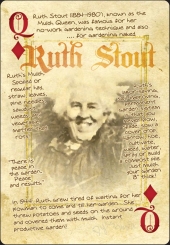
 1
1




Western Montana gardener and botanist in zone 6a according to 2012 zone update.
Gardening on lakebed sediments with 7 inch silty clay loam topsoil, 7 inch clay accumulation layer underneath, have added sand in places.




A human being should be able to change a diaper, plan an invasion, butcher a hog, conn a ship, design a building, write a sonnet, balance accounts, build a wall, set a bone, comfort the dying, take orders, give orders, cooperate, act alone, solve equations, analyze a new problem, pitch manure, program a computer, cook a tasty meal, fight efficiently, die gallantly. Specialization is for insects.
-Robert A. Heinlein
 3
3




Idle dreamer




A build too cool to miss:Mike's GreenhouseA great example:Joseph's Garden
All the soil info you'll ever need:
Redhawk's excellent soil-building series









A human being should be able to change a diaper, plan an invasion, butcher a hog, conn a ship, design a building, write a sonnet, balance accounts, build a wall, set a bone, comfort the dying, take orders, give orders, cooperate, act alone, solve equations, analyze a new problem, pitch manure, program a computer, cook a tasty meal, fight efficiently, die gallantly. Specialization is for insects.
-Robert A. Heinlein
 1
1




Western Montana gardener and botanist in zone 6a according to 2012 zone update.
Gardening on lakebed sediments with 7 inch silty clay loam topsoil, 7 inch clay accumulation layer underneath, have added sand in places.




Iterations are fine, we don't have to be perfect
My 2nd Location:Florida HardinessZone:10 AHS:10 GDD:8500 Rainfall:2in/mth winter, 8in/mth summer, Soil:Sand pH8 Flat




Western Montana gardener and botanist in zone 6a according to 2012 zone update.
Gardening on lakebed sediments with 7 inch silty clay loam topsoil, 7 inch clay accumulation layer underneath, have added sand in places.








Examine your lifestyle, multiply it by 7.7 billion other ego-monkeys with similar desires and query whether that global impact is conscionable.

|
Always look on the bright side of life. At least this ad is really tiny:
Learn Permaculture through a little hard work
https://wheaton-labs.com/bootcamp
|





